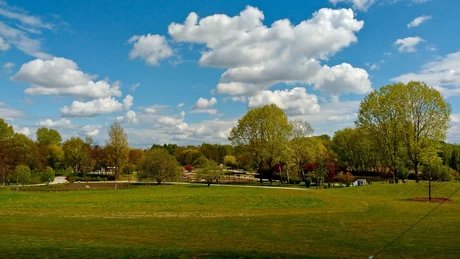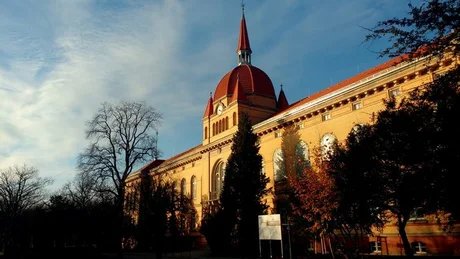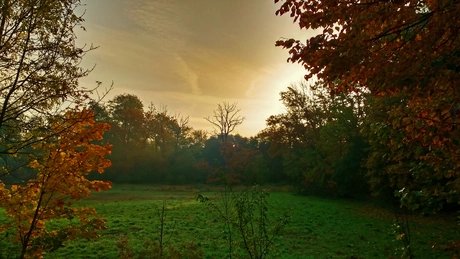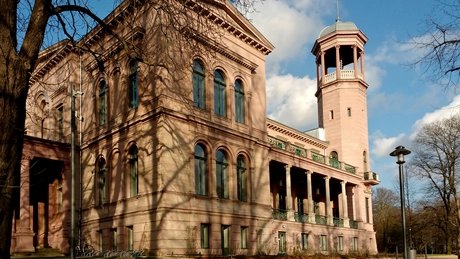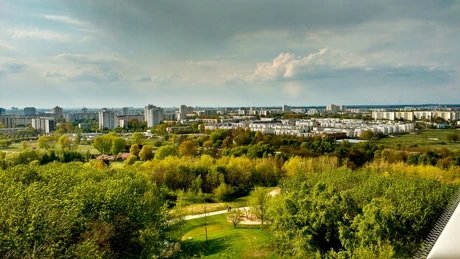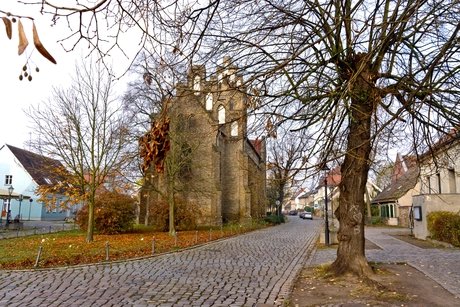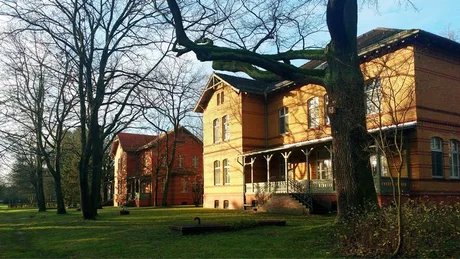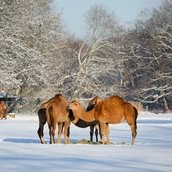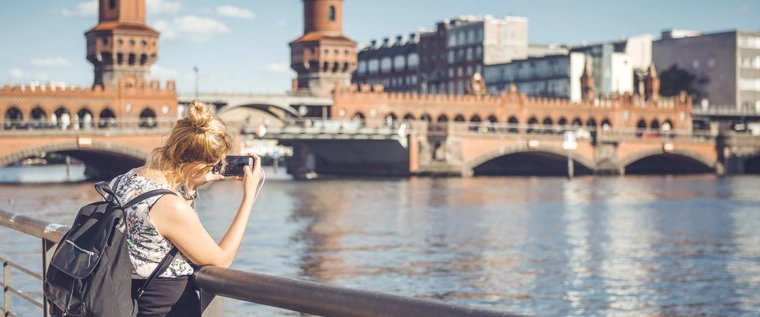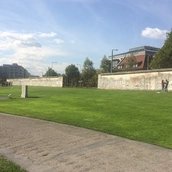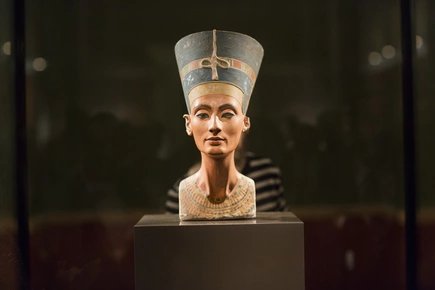
Discover the green district of Marzahn-Hellersdorf by bike
For example, you can rent bicycles at Bicycle Concept in Alt Biesdorf 64 or at the S+U-Bahnhof Wuhletal at the Infobox. Cycle along the Wuhle river and let yourself be surprised by the abundance of nature on this route, make a detour to the right and left into the district.
Tip: Historical hospital complex Wuhlegarten
The former Wilhelm Griesinger Hospital was built at the end of the 19th century on the Berlin city border for the treatment of epilepsy patients. The well-preserved historical hospital complex on an area of 100,000 square metres is really worth seeing. To the left and right of the tree-planted main avenue, in the building style customary at that time, you usually distribute two-storey buildings made of yellow and red clinker bricks.
The open spaces between the buildings are planted with trees and bushes and give a generous and peaceful impression. The former residential buildings for the clinic physicians (also known as country houses) form a completely separate complex. Further noteworthy is the hospital church, which was destroyed in World War II and rebuilt from 1994 to 1997 on the basis of the old plans. Students are now being taught in the impressive former administration building. The German-Russian International Lomonossow School is located here. Where the red rescue helicopter is stationed on the roof of the Trauma Hospital Berlin, you can sit in a well-kept garden in the sunshine and drink coffee.
Tip: Park and Biesdorf Palace
Bicycle through the park past the fountain pond, ice cellar, park stage and tea pavilion and enjoy picturesque views. Surrounded by an idyllic and enchanted park, Schloss Biesdorf also offers art, culture, recreation and culinary delights. The new landmark in Berlin's cultural landscape is devoted to the dialogue of international contemporary art with positions from the former GDR. Artist talks, lectures and concerts are held in parallel. Biesdorf Castle is a late classicistic villa from the 19th century.
After a visit to the exhibitions at Schloss Biesdorf, a stopover in the pretty café is worthwhile. In the middle of the idyllic castle park you can enjoy home-baked cakes and tarts as well as fresh coffee specialities in the historical ambience of the beautiful Biesdorf Palace.
Tip: Wuhleweg
The regional hiking trail leads along the Wuhle for 16 km from Berlin-Köpenick to Berlin-Ahrensfelde. The picturesque path, which is used by cyclists and hikers alike, is one of Berlin's 20 green main paths. Bicycle through the wide river valley with its beautiful views, see the Kienberg and the gardens of the world or the Jelena-Santic Peace Park. Through the meadows and meadows along the Wuhle, you can relax and pedal into the pedals and enjoy the green Marzahn. However, if you follow the Wuhleweg to the south, you will reach the Wuhle up to the soccer stadium of the 1st FC Union at the old forester's shop and the old town of Köpenick.
Tip: Gardens of the World
Marvel at the huge recreational park with its size of more than 60 football pitches. In the Chinese Garden you can drink tea, listen to the water in the Oriental Garden and get lost in the labyrinth. Take the cable car up to the Kienberg and climb the Wolkenhain. You will be rewarded with a magnificent view over the whole city. In culinary terms, Wolke Sieben provides you with homemade food. After visiting the gardens of the world, you will continue your journey to the village centre of Alt-Marzahn.
Tip: Old-Marzahn with small church
The village town of Marzahn, which dates back to the Middle Ages, has preserved its historic centre to this day. Take a look at the KulturGut Marzahn and take a look at the magnificent farmer's garden: During a guided tour you will learn a lot about fruits, vegetables and herbs. In the open ceramic workshop "Chamottchen" you can browse to your heart's content between hand-painted tiles, bowls, pots and fine garden decoration. Marzahn pottery is the place to design and present their works for sale. Walk on to the old village school building in the middle of the picturesque town of Anger, which today houses a modern, small district museum. With interesting temporary exhibitions it illuminates 11,000 years of history and culture in the northeasternmost district of Berlin. Right behind it is the old village church from the 19th century with a baptismal font from the late Renaissance and such an impressive acoustics that concerts are held here on a regular basis. Again on the cobblestone pavement of the village road we pass goats, geese and sheep, which come curiously to the pasture fence. They belong to the Tierhof Alt-Marzahn, where farm animals from the Mark Brandenburg as well as rare domestic animal breeds are bred and kept.
Tip: Bockwindmühle Marzahn
Directly behind the farm and the village church is the old mill with a mill shop selling traditional mill products.
In the still fully functional mill, the miller's craft is still alive. At the experience grinding, the miller shows how the wooden wheels drive the mill and the grain is ground. Back on the Wuhleweg you reach Ahrensfelde at the northern end of the city.
Tip: Ahrensfelde hills
A wonderful view over the Barnimer Feldmark to the TV tower spreads out in front of you. The Ahrensfelder Berge are the third highest elevation in Berlin after Teufelsberg and the Müggelberge mountains. Behind the Ahrensfelder Berge you will reach the bank of the Neue Wuhle, follow it and get off at the S-Bahn station Ahrensfelde, satisfied and exhausted, and take the S-Bahn back to town.
